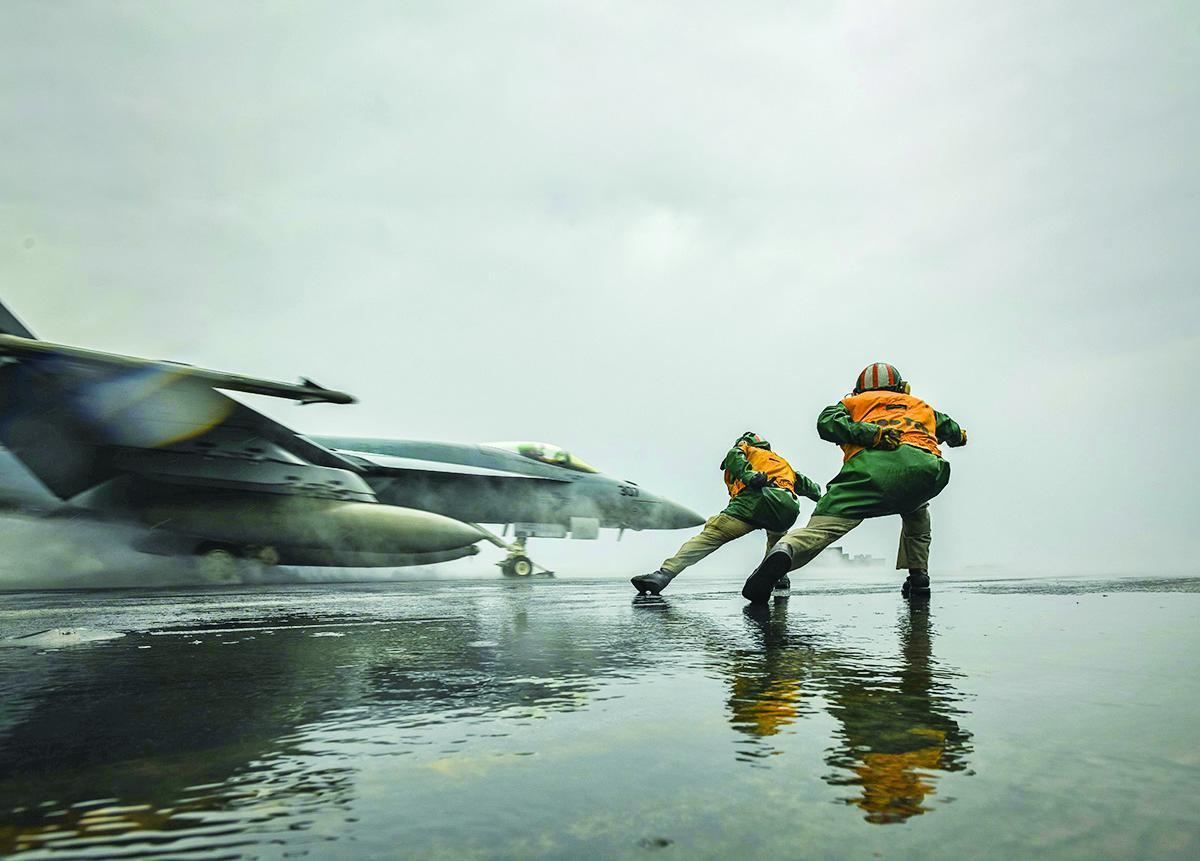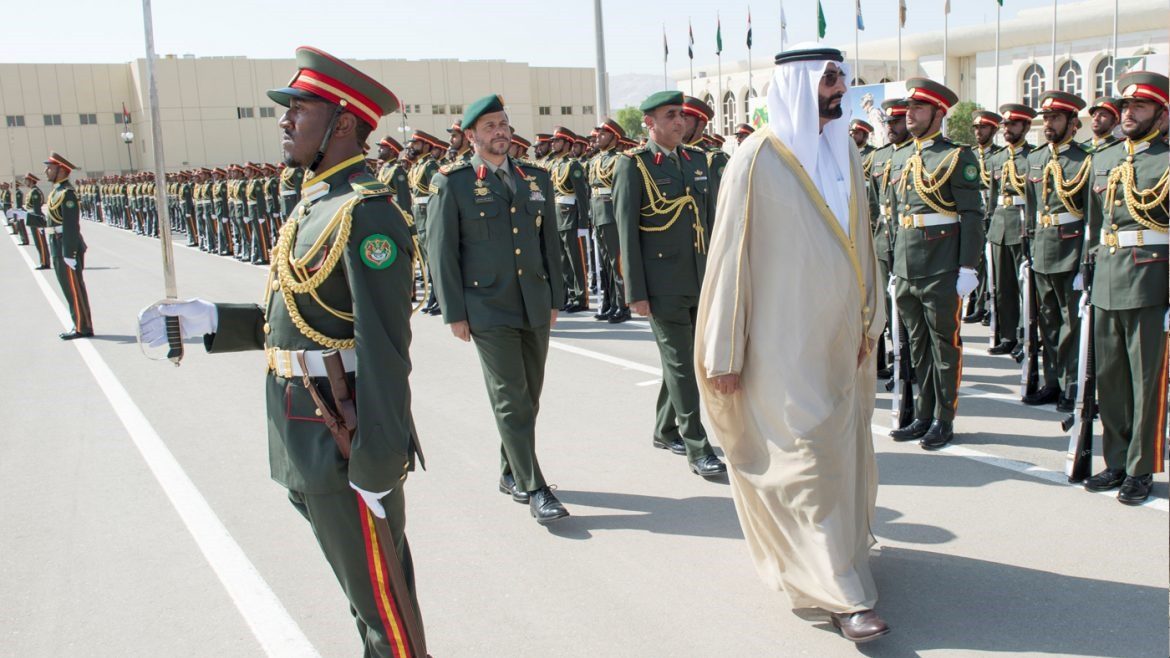In March 2019, widespread flooding from the Missouri River forced the evacuation of nine aircraft from Offutt Air Force Base in Nebraska, USA. The contaminated floodwaters, mixed with sewage, submerged nearly one-third of the base, including runways, effectively halting flight operations and damaging infrastructure. This event is one of many reported in recent years, as wildfires, hurricanes, and extreme weather—exacerbated by climate change—continue to disrupt U.S. air bases, affecting operations and training missions.

Climate change presents an evolving and multidimensional threat, driven by human activities across energy, transportation, agriculture, and resource use. Its destabilising effects are becoming increasingly evident across all aspects of life. The global military and security communities are now more acutely aware of the security risks posed by climate change, with its rapid impact on operational theatres and critical infrastructure. In 2017, the U.S. Congress formally recognised climate change as a direct threat to national security. The risks associated with climate change transcend national borders and are expected to intensify in both frequency and severity as global temperatures continue to rise.
Within the air force sector, commanders, pilots, and strategic planners increasingly acknowledge that climate change is reshaping global security. Operating environments are becoming more complex, posing significant challenges to maintaining readiness, accessing strategic locations, and executing missions. To address these challenges, air forces must adapt by modernising capabilities and enhancing operational resilience, all while fulfilling their core mission: flying, fighting, and winning—anytime, anywhere.
The Air Force affects climate change, and in turn, is also affected by it. For example, the U.S. Air Force is the largest emitter of greenhouse gases within the U.S. Department of Defense. These emissions contribute to global warming, which, in turn, intensifies extreme weather events that threaten air force installations and missions. According to Frank Kendall, a senior U.S. Air Force leader, “Extreme environmental conditions are already imposing significant costs on air force facilities and operations while simultaneously creating new risks to our training and effectiveness.” Despite these challenges, climate change also presents an opportunity for innovation and modernisation within the air force. Advancements in technology, improved training methods, and the integration of renewable energy sources can enhance operational effectiveness and sustainability. Through international cooperation and strategic planning, many of the obstacles posed by climate change can be mitigated, ultimately strengthening national security in the future.
The U.S. Air Force’s 2022 Climate Action Plan outlines a three-pronged approach to addressing climate change:
Enhancing Capabilities: Ensuring air force readiness in the face of environmental challenges.
Reducing Emissions: Implementing measures to minimise greenhouse gas output.
Decreasing Reliance on Fossil Fuels: Exploring alternative energy sources to improve sustainability.
Impact of Climate Change on Air Forces
Climate change significantly affects air forces worldwide, requiring adjustments in operational strategies and military capabilities. The following are key areas of impact:
1. Infrastructure and Operational Readiness
Rising temperatures, shifting precipitation patterns, and extreme weather events pose serious risks to air force bases and their operational readiness. Floods, hurricanes, and wildfires can render runways unusable, preventing fighter jets from taking off or landing. Severe storms and high winds increase the likelihood of aviation accidents by reducing visibility and compromising control systems. These conditions can delay or even cancel critical training and combat missions, ultimately affecting military preparedness.
2. Damage to Aircraft and Weapons Systems
Climate change can degrade aircraft performance. Higher temperatures and humidity levels reduce cooling system efficiency, leading to increased energy consumption and potential engine overheating. Persistent high temperatures in operational theatres may necessitate technical modifications to fighter jets, such as enhanced cooling systems and reinforced structures to withstand extreme conditions. Additionally, prolonged exposure to extreme heat can damage aircraft electronics, reduce payload capacity, and compromise ammunition storage safety.
3. Logistics and Supply Chain Challenges
The air force’s supply chain and logistical operations must account for climate-related disruptions. Extreme weather conditions can hinder the transportation of essential resources such as fuel, munitions, and maintenance supplies.
4. Training and Readiness Adjustments
Pilots and air crews must undergo specialised training to adapt to increasingly unpredictable weather conditions. This includes simulated and real-world exercises in extreme environments, ensuring that personnel can operate effectively in adverse conditions.
Adapting to a Changing Environment
To address the growing challenges posed by climate change, air forces across the globe are adopting long-term strategies aimed at resilience and sustainability. These measures include the following:
Technological Advancements
One of the primary adaptation strategies involves modernising aircraft and integrating advanced technologies. Air forces are increasingly equipping their fleets with state-of-the-art systems capable of operating in extreme weather conditions. Innovations such as enhanced avionics, improved heat-resistant materials, and advanced navigation systems enable pilots to conduct missions safely in adverse weather conditions, including fog, high temperatures, and storms.
Training & Simulation
To prepare personnel for climate-related challenges, air forces have introduced specialised training programmes. These initiatives focus on equipping pilots and ground crews with the skills required to handle extreme weather conditions, conduct operations in high-temperature environments, and execute landings and takeoffs in suboptimal conditions.
Virtual Reality
Virtual reality (VR) has become a crucial tool in military aviation training. By leveraging immersive flight simulators, air forces can reduce the need for physical training flights, thereby cutting fuel consumption and lowering greenhouse gas emissions. VR-based training enhances decision-making skills, operational readiness, and mission effectiveness while minimising the environmental impact of traditional training exercises.
Infrastructure Resilience & Base Redesign
As sea levels rise and extreme weather events become more frequent, military planners are reassessing the design of air bases to enhance climate resilience. This includes relocating critical infrastructure to higher ground and reinforcing facilities against flooding.
Alternative Energy Solutions
A pivotal component of climate adaptation within air forces is the adoption of renewable energy solutions. Many air bases worldwide have begun integrating solar and wind energy projects to reduce reliance on traditional fossil fuels. The installation of solar panels on military facilities not only generates sustainable electricity but also decreases carbon emissions. Moreover, research is actively being conducted to develop hybrid and fully electric aircraft, which could play a significant role in reducing the environmental footprint of military aviation.

International Cooperation
Given the transboundary nature of climate change, international collaboration among air forces is essential. Joint efforts in research and development, knowledge exchange, and multinational training exercises help enhance preparedness and resilience.
Disaster Response & Humanitarian Assistance
Air forces play a critical role in disaster response operations, especially as climate change intensifies the frequency and severity of natural disasters. Whether responding to hurricanes, wildfires, or floods, air forces contribute significantly to search and rescue missions, medical evacuations, and the delivery of emergency supplies. These operations require coordinated efforts between military and civilian agencies, underscoring the importance of continuous training and strategic planning.
The U.S. Air Force Climate Action Plan
In 2022, the U.S. Air Force released its first Climate Action Plan, outlining ambitious goals to reduce its carbon footprint and adapt to evolving climate challenges. A key objective of this plan is achieving net-zero emissions across air bases by 2046. The initiative also emphasises the need for operational adjustments to withstand climate-related disruptions, particularly in base infrastructure and energy sourcing.
Building upon this framework, the Air Force introduced its Climate Campaign Plan in 2023, setting measurable goals to ensure operational resilience in a changing climate. The plan prioritises three key areas:
1. Maintaining Air & Space Superiority Amid Climate Risks: Investing in climate-resilient infrastructure to ensure air power projection capabilities remain intact despite environmental challenges.
2. Integrating Climate Considerations into Decision-Making: Incorporating climate security risks into military strategy, operational planning, and logistics management.
3. Optimising Energy Use & Expanding Renewable Energy Sources: Enhancing energy efficiency and shifting towards carbon-free electricity and low-emission aviation technologies.
Innovative Solutions for a Sustainable Future
The U.S. Air Force is implementing innovative solutions and experimental programs to achieve the objectives outlined in its Climate Action Plan. These efforts aim to enhance mission readiness by ensuring energy resilience across military installations. A key priority is modernising infrastructure and investing in climate-adaptive facilities to maintain air dominance in the face of climate-related threats. Given that infrastructure forms the backbone of operational readiness, securing these assets remains a top priority.
To mitigate climate risks, the Air Force is actively evaluating environmental impacts, upgrading infrastructure, and adapting facilities to minimise vulnerabilities. A notable example is MacDill Air Force Base in Florida, which has partnered with the local community to build artificial coral reefs—an innovative, nature-based solution to combat coastal erosion and shield against sudden storms.
In alignment with its second priority, the Air Force has begun integrating climate considerations into its policies and practices. This approach ensures that energy and infrastructure projects are resilient to climate change while maximising operational capability and reducing greenhouse gas emissions wherever possible. The third priority focuses on expanding the use of alternative energy sources, improving energy efficiency, and striving for 100% carbon-free electricity. Additionally, the Air Force is advancing its goal of achieving zero-emission aircraft. These objectives are being realised through strategic investments and pilot programs designed to enhance sustainability within military installations.
By: Retired Colonel Eng. Khaled Al-Ananzah
(Advisor and Trainer in Environmental and Occupational Safety)




















